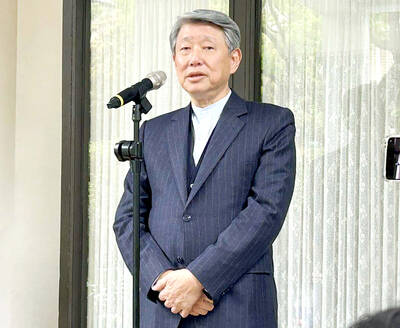Japan’s consumer prices stopped falling last month for the first time in 13 months, ending the country’s longest deflationary stretch since 2011.
Prices, excluding those for fresh food, were unchanged from a year earlier, the Japanese Ministry of Internal Affairs and Communications reported yesterday in a result that matched an estimate from analysts.
Rising costs for hotels, processed food and energy cushioned the impact of mobile phone rates that have fallen sharply under pressure from outgoing Japanese Prime Minister Yoshihide Suga.
Despite last month’s slightly improved reading, Japan’s weak inflation pulse has trapped the Bank of Japan in a holding pattern while the Federal Reserve and other central banks move toward reining in pandemic stimulus. The bank on Wednesday kept its key stimulus tools in place and would likely do so for the foreseeable future.
“At least we can say prices aren’t falling, so the BOJ can continue to keep a close eye on it, without taking additional easing steps,” NLI Research Institute economist Taro Saito said.
While producer prices have jumped, climbing 5.5 percent last month, most Japanese firms aren’t choosing to pass those costs on to customers.
Global supply-chain snags and surging commodities prompted the Paris-based Organisation for Economic Co-operation and Development this week to raise its forecast for consumer price inflation this year and next in every G7 country, except Japan.
Last month’s inflation report continued to show the numbers being swayed by government initiatives that analysts say have made it hard to grasp underlying price trends.
The cost of hotel rooms rose nearly 50 percent compared with the level last summer, when the government’s “Go-To Travel” discounts to help the ailing tourism industry had just gone into effect.
Moving in the opposite direction, the cost of mobile phone service fell by almost the same amount, shaving 1.2 percentage points from the overall price index. Getting phone companies to slash rates was a top priority of the Suga administration.

MULTIFACETED: A task force has analyzed possible scenarios and created responses to assist domestic industries in dealing with US tariffs, the economics minister said The Executive Yuan is tomorrow to announce countermeasures to US President Donald Trump’s planned reciprocal tariffs, although the details of the plan would not be made public until Monday next week, Minister of Economic Affairs J.W. Kuo (郭智輝) said yesterday. The Cabinet established an economic and trade task force in November last year to deal with US trade and tariff related issues, Kuo told reporters outside the legislature in Taipei. The task force has been analyzing and evaluating all kinds of scenarios to identify suitable responses and determine how best to assist domestic industries in managing the effects of Trump’s tariffs, he

TIGHT-LIPPED: UMC said it had no merger plans at the moment, after Nikkei Asia reported that the firm and GlobalFoundries were considering restarting merger talks United Microelectronics Corp (UMC, 聯電), the world’s No. 4 contract chipmaker, yesterday launched a new US$5 billion 12-inch chip factory in Singapore as part of its latest effort to diversify its manufacturing footprint amid growing geopolitical risks. The new factory, adjacent to UMC’s existing Singapore fab in the Pasir Res Wafer Fab Park, is scheduled to enter volume production next year, utilizing mature 22-nanometer and 28-nanometer process technologies, UMC said in a statement. The company plans to invest US$5 billion during the first phase of the new fab, which would have an installed capacity of 30,000 12-inch wafers per month, it said. The

Taiwan’s official purchasing managers’ index (PMI) last month rose 0.2 percentage points to 54.2, in a second consecutive month of expansion, thanks to front-loading demand intended to avoid potential US tariff hikes, the Chung-Hua Institution for Economic Research (CIER, 中華經濟研究院) said yesterday. While short-term demand appeared robust, uncertainties rose due to US President Donald Trump’s unpredictable trade policy, CIER president Lien Hsien-ming (連賢明) told a news conference in Taipei. Taiwan’s economy this year would be characterized by high-level fluctuations and the volatility would be wilder than most expect, Lien said Demand for electronics, particularly semiconductors, continues to benefit from US technology giants’ effort

‘SWASTICAR’: Tesla CEO Elon Musk’s close association with Donald Trump has prompted opponents to brand him a ‘Nazi’ and resulted in a dramatic drop in sales Demonstrators descended on Tesla Inc dealerships across the US, and in Europe and Canada on Saturday to protest company chief Elon Musk, who has amassed extraordinary power as a top adviser to US President Donald Trump. Waving signs with messages such as “Musk is stealing our money” and “Reclaim our country,” the protests largely took place peacefully following fiery episodes of vandalism on Tesla vehicles, dealerships and other facilities in recent weeks that US officials have denounced as terrorism. Hundreds rallied on Saturday outside the Tesla dealership in Manhattan. Some blasted Musk, the world’s richest man, while others demanded the shuttering of his